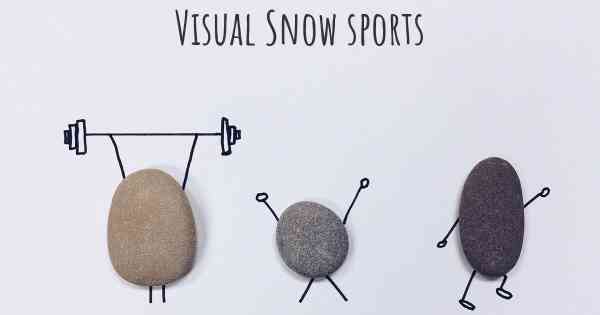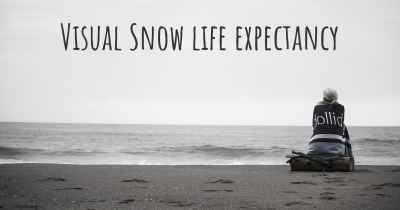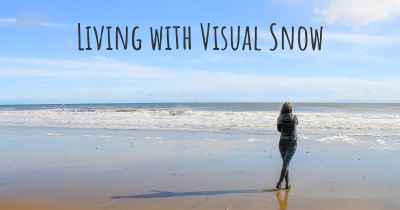Is it advisable to do exercise when affected by Visual Snow? Which activities would you suggest and how intense should they be?
See if it is advisable for people with Visual Snow to practice sports and which ones are the most recommended if you have Visual Snow

Is it advisable to do exercise when affected by Visual Snow?
Visual Snow is a condition characterized by the perception of tiny flickering dots or static in a person's field of vision. It can be accompanied by other visual disturbances such as floaters, light sensitivity, and afterimages. While exercise is generally beneficial for overall health and well-being, it is important to consider the impact it may have on individuals affected by Visual Snow.
Benefits of Exercise:
Engaging in regular exercise offers numerous benefits, including improved cardiovascular health, increased strength and flexibility, enhanced mood, and reduced stress levels. Exercise can also promote better sleep patterns and boost cognitive function. These benefits can be particularly valuable for individuals with Visual Snow, as they may experience additional challenges related to their condition.
Considerations for Exercise:
When deciding on an exercise routine, it is crucial to take into account the specific symptoms and limitations associated with Visual Snow. Some individuals with Visual Snow may experience increased sensitivity to light or visual stimuli, which can be exacerbated during physical activity. It is important to choose exercises that minimize these triggers and do not worsen symptoms.
Suggested Activities:
Low-impact exercises that do not put excessive strain on the eyes or exacerbate visual disturbances are generally recommended for individuals with Visual Snow. Here are some activities that may be suitable:
- Walking or jogging: These activities can be performed outdoors or on a treadmill, allowing individuals to control the level of visual stimuli.
- Yoga or Pilates: These exercises focus on gentle movements, stretching, and controlled breathing, promoting relaxation and reducing stress.
- Swimming: This low-impact exercise can be beneficial as it provides a soothing environment and reduces strain on the eyes.
- Cycling: Riding a stationary bike or cycling outdoors can be a good option, as it allows individuals to control the intensity and avoid excessive visual stimuli.
Exercise Intensity:
The intensity of exercise should be tailored to the individual's fitness level and tolerance. It is generally recommended to start with low to moderate intensity and gradually increase as tolerated. Paying attention to any symptoms or discomfort during and after exercise is crucial. If symptoms worsen or become bothersome, it may be necessary to adjust the intensity or type of exercise.
Consultation with a Healthcare Professional:
Before starting any exercise program, it is advisable for individuals with Visual Snow to consult with a healthcare professional, such as an ophthalmologist or neurologist, who can provide personalized guidance based on their specific condition and symptoms. They can offer recommendations on suitable exercises and help monitor any changes or potential risks.
In conclusion, exercise can be beneficial for individuals affected by Visual Snow, but it is important to choose activities that minimize visual triggers and do not worsen symptoms. Low-impact exercises such as walking, yoga, swimming, and cycling are generally recommended. The intensity of exercise should be gradually increased based on individual tolerance. Consulting with a healthcare professional is crucial to ensure a safe and tailored exercise routine.
Posted May 9, 2017 by Emily 1150
Posted May 9, 2017 by Leonardo 2000
Posted Jun 4, 2017 by Jayden 1410
Posted Oct 2, 2017 by Rrakusin 2000
Posted Jan 12, 2018 by Max 3550
Posted Mar 13, 2018 by samanthapaige 1500
Posted Mar 22, 2018 by Eimear 1500
Posted May 28, 2019 by Labnjab 2500
Posted Jun 19, 2019 by Kiwi 500
Posted Sep 3, 2019 by Yasmine Elsen 2500
Posted Sep 4, 2019 by Denali 2550
Posted Sep 11, 2019 by Diane 900
Posted Dec 11, 2019 by Abhishek 100
Posted Mar 2, 2020 by Karmalita 1400
Posted Sep 14, 2021 by Kay 2670
Posted Mar 14, 2022 by Khaled 3630
I managed 18 years of British Army service in the Scottish Infantry with VSS symptoms. I didn’t realise I had issues and thought everyone seen what I seen. My job role required a lot of arduous exercise with no change to my symptoms.
It has only been later in life I have experienced major issues which effects my quality of life and ability to function to a high degree day to day so currently I would find physical exercise difficult.
Posted Dec 3, 2022 by Stuart3758 900








